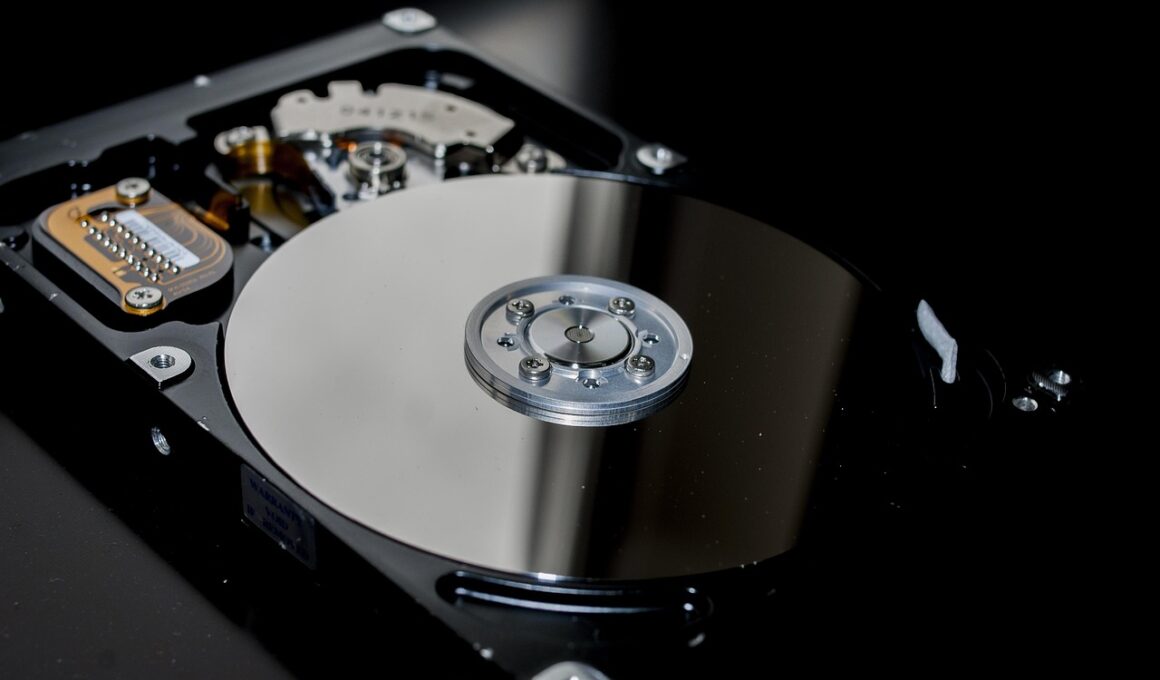Stream Backup Automation: Save Time and Prevent Interruptions
When it comes to live streaming, maintaining a seamless broadcast is essential. To achieve this, one should focus on the importance of backups and redundancy. A backup strategy allows streamers to remain prepared for any unexpected technical difficulties. Implementing automated backup solutions can significantly reduce the time spent on managing backups efficiently. Automation significantly minimizes human error, ensuring that backups are consistently created without missing critical moments during a stream session. With reliable automatic backups, streamers can focus more on engaging with their audience rather than getting bogged down with technical issues. A good automated backup solution can create multiple backup files. They can be stored across varied locations, providing solid redundancy. For instance, using cloud storage along with local hard drives ensures that content is retrievable even if one avenue fails. Such a comprehensive approach mitigates the risk of data loss during live productions. By utilizing sophisticated backup systems, content can be seamlessly transitioned should any part of the original stream fail. As you can see, preparation through automation is crucial for any serious streamer.
The next step involves understanding the specifics of how to implement stream backup automation effectively. First, examining existing hardware is key. Streamers need adequate bandwidth, and their local storage should be robust. High-capacity external drives or RAID (Redundant Array of Independent Disks) setups can be excellent options for local storage solutions. RAID configurations offer redundancy by duplicating data across multiple disks. Additionally, choosing the right software is crucial. Finding software that integrates seamlessly with your streaming platform and allows automation can streamline backup processes. Popular software options include OBS Studio paired with tools like Restream or SRT. Ensure that the chosen program supports real-time backups. This means it continuously saves the content as it runs instead of just saving once it concludes. Another step is scheduling automatic backups during preset intervals whether you’re live or not. This guarantees that if something were to go wrong, a recent version of the stream is always available and safe. Keep in mind that redundancy is about creating copies of content to ensure availability whenever needed. Planning ahead is essential for an effective backup strategy.
Choosing Your Backup Locations
Next, let’s explore optimal backup locations for storage. One effective strategy for streamers is to leverage both local and cloud storage solutions. Local drives provide quick access speed, which is essential for instantiating content quickly. However, relying solely on local storage may pose risks. A hard drive failure could mean the loss of precious content. Cloud storage solutions, however, offer a more secure alternative. Platforms like Google Drive, Dropbox, or Amazon S3 and others can store your backups securely off-site. If your local storage fails due to hardware issues, natural disasters, or other unforeseen events, cloud solutions ensure content is accessible from anywhere, at any time. Furthermore, utilizing multiple cloud platforms can enhance redundancy additionally, preventing dependence on just one service. Streamers should evaluate the costs and space provided by each choice. Many services feature free tiers; however, they may limit file sizes and capabilities. It’s necessary to prioritize systems that offer backup automation features, aligning perfectly with your live stream requirements and maintaining the integrity of your content throughout its lifecycle.
In addition to choosing the right storage strategy, awareness of potential risks during streaming is vital. When faced with connectivity issues during a live broadcast, having backups ready translates into audience retention. One approach is utilizing redundant internet connections, such as a backup cellular data connection, while also relying on a primary broadband internet connection. This improves overall streaming quality. Furthermore, consider testing different encoders and streaming resolutions to mitigate poor performance due to varying internet speeds. Backup encoders can provide fail-safes in the event the primary encoder encounters errors during transmission. Ideally, settings should allow for quick switching between primary and secondary encoders without interruption. If a buffer occurs, a capable encoding solution will automatically switch to the backup feed with no observable impact to your audience. Being equipped with various backup strategies is fundamental not only for stream quality but also for professional reputation. For instance, repeatedly encountering interruptions might lead to audience frustration and lower engagement levels. Thus, investing time and resources into a solid backup plan is crucial for successful streaming practices.
Testing Your Backup Systems
Moreover, after setting up your backup strategy, frequent testing is essential. Regularly check your automated backup solutions to verify that they’re functioning correctly. Simple tests could include initiating streaming to see if backups kick in as expected. Furthermore, try recovering a previous stream from your backup systems. This helps in understanding how long it takes and how effective the backup process is in real situations. By discovering potential weaknesses before an actual stream, significant problems can be addressed promptly. Also, checking storage space regularly is necessary to avoid any potential hiccups. If you ignore this critical task, your automated backups may fail due to inadequate space. Clear obsolete files periodically to maintain optimal performance. Leveraging notifications to alert you when disk space is low can also be beneficial. Don’t forget to review logs from your backup software; they may offer insights into patterns and performance. A reliable notification system will prove invaluable in ensuring you’re always informed about the state of backups. This proactive approach can save significant time during live streaming sessions.
Moving on, it’s also beneficial for streamers to educate themselves about available recovery methods should things go wrong. During emergencies, knowing steps can make the difference between a minor issue and a total disaster. Resources on streaming best practices cover these topics in-depth, often including guidelines on technological preparation. Many streamers utilize social media platforms or forums for assistance from peers. Part of ensuring a successful streaming experience involves having the right community support ready. Additionally, discovering online courses focusing on streaming technology can significantly upskill your buffering strategies. These courses often showcase case studies reflecting failure and recovery management, equipping streamers with an understanding of various scenarios. Finally, content record-keeping must be emphasized; it may enhance recovery processes later. By maintaining a log of backup activities, potential issues can be remedied more efficiently. Streamers can save themselves from unnecessary panic by developing clear protocols for unforeseen problems. Ultimately, aligning all backup efforts with consistent educational practices strengthens your streaming presence and improves overall readiness.
Conclusion and Future Considerations
As you finalize your approach to streaming, reconsider all the tools and techniques discussed. Consistency is the most crucial element in ensuring solid backup strategies and preventing interruptions. Regularly reviewing your setup encourages continual improvement. Stay informed about advancements in technology, such as innovations that enhance backup efficiency. The streaming landscape rapidly changes, and by staying updated, you allow your methods and practices to evolve appropriately. Streamers can also consider integrating AI-driven tools into their processes, making content backups even more seamless. Future iterations of backup systems may offer smarter solutions that you can automate based on your streaming pattern analysis. Effectively detailed plans set the foundation for successful content delivery while retaining audience loyalty. Remember that automation saves immense amounts of time and minimizes your focus on backup concerns. Direct your attention to what truly matters: creating engaging content and fostering your community. Ultimately, investing time and resources into perfecting this aspect of live streaming can yield significant rewards and help build a more resilient streaming career.


